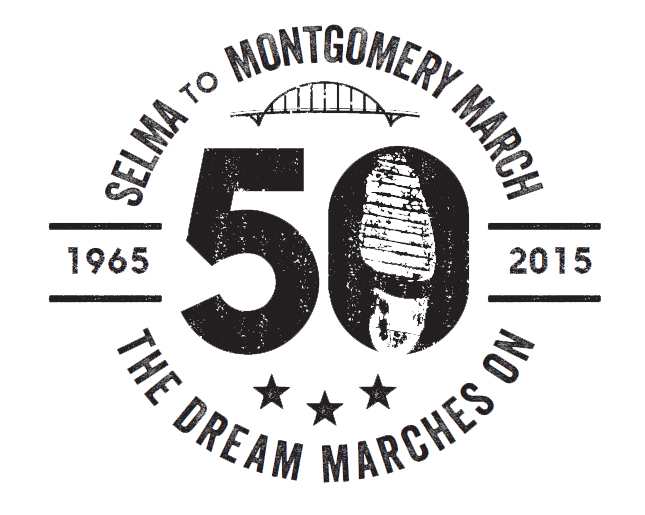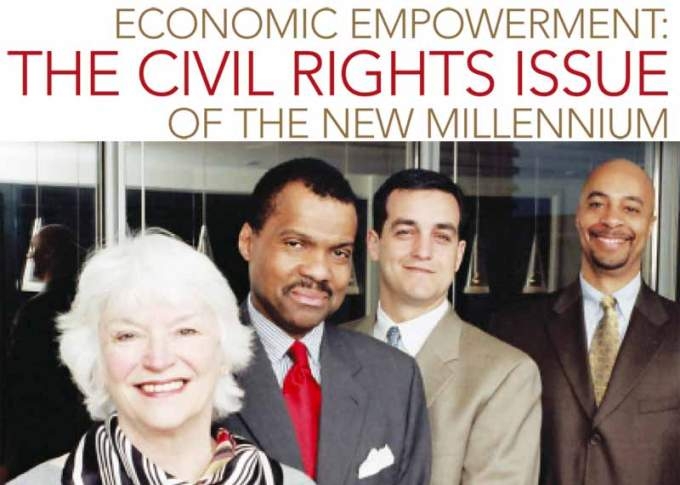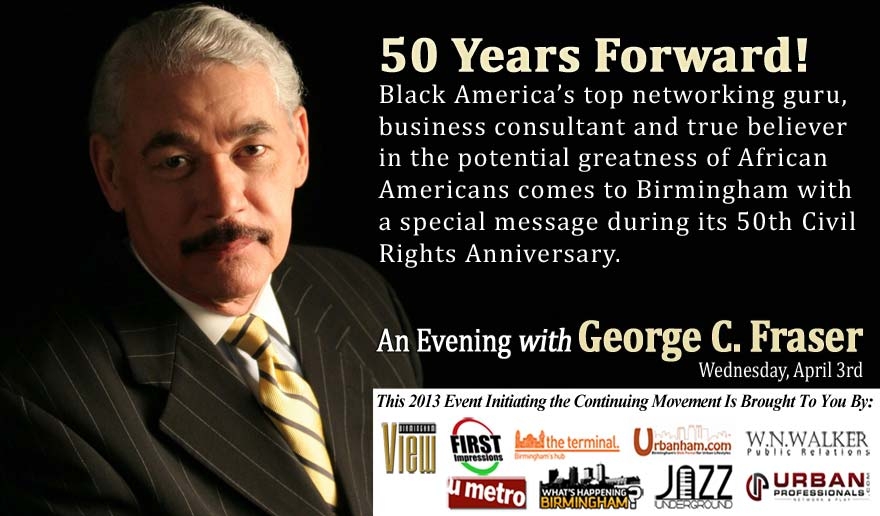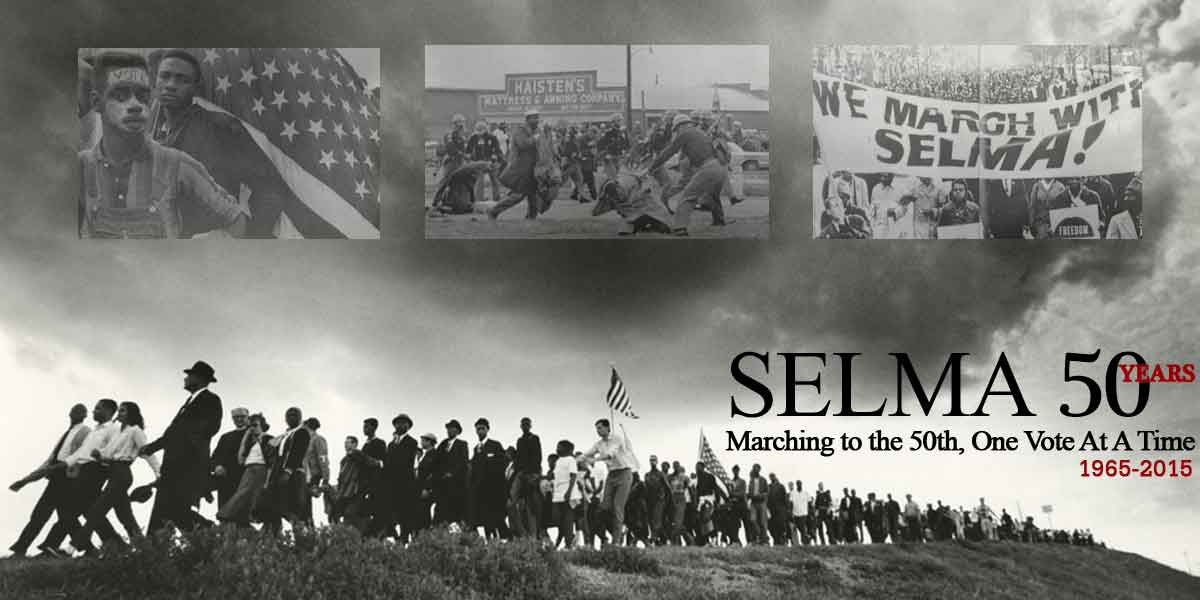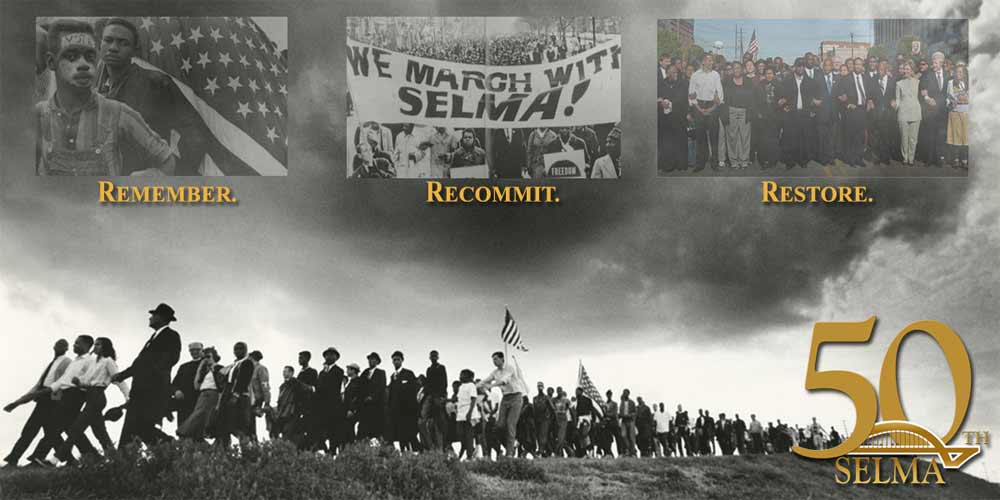|
Black political power turned into |
BY VICKII HOWELL AND LEE KIMBLE PHOTOGRAPHY BY JONATHAN PURVIS, ISAAC GASTON AND BILL HENRY |
Many of Atlanta ‘s black millionaires owe their status to Maynard Jackson.
In the early 70s, that city’s first black mayor took oversight of the multi-million dollar expansion of Hartsfield Airport ‘s terminal. Jackson shook the business community to its foundations when he told its leaders the project would come to a screeching halt if minority firms didn’t get 25% of the work awarded.
Outraged white businessmen fiercely objected. Yet Jackson persevered and won concessions that allowed them to joint venture with black contractors and vendors, effectively cutting minority companies a 20% to 25% slice of the $450 million airport expansion pie. Contrary to dire warnings, the expansion was completed on time and under budget. Atlanta ‘s international airport was born.
According to a 2003 Black Enterprise magazine article, Jackson increased the percentage of public works contracts to minorities from less than 1% in 1973 to roughly 39% in 1978. It also said Jackson , more than any other mayor, had a hand in developing many companies on Black Enterprise ‘s list of top 100 black-owned firms in the nation.
Jackson ‘s policies were duplicated by other cities and federal agencies, effectively pushing open doors that were closed to minority contractors, and helped create scores of new black millionaires across the country.
Except in Birmingham.
The Birmingham Test
When former Mayor Richard Arrington attempted to establish a 10-percent set-aside program for blacks and women in City construction contracts, the Association of General Contractors (AGC) sued the City, and won, says current Mayor Bernard Kincaid.
The settlement of that federal suit led to the creation of a voluntary system through the Birmingham Construction Industry Authority (BCIA), which Kincaid calls “archaic” and “a dismal failure,” especially compared to what Atlanta has accomplished in terms of leveling the playing field.
Others looking for signs that the state of minority business in Birmingham is significantly better are also disappointed.
An analysis of U.S. Census data from 1997 (the most recent data available at the time of this article) reveals that firms in the Birmingham metro area generate $75 billion in sale receipts. Minority firms generate just 11% of that amount, $580 million, even though minorities comprise about 30% of the population. Black-owned businesses generate less than half of 1% of sales, an unimpressive 0.3%.
“That’s woeful; that’s pitiful,” said Bob Dickerson , executive director of the Birmingham Business Resource Center , which provides management training and helps minority firms find loans.
Del Davis, a black contractor in Birmingham , says the findings cement economics as blacks’ top civil rights challenge today.
“Forty years after all the marching, preaching and hand clapping, we are still riding in the back of the bus and drinking from the ‘blacks only’ water fountain” in terms of economic opportunities, he says. “Local minority firms (if they get in the deal) normally have to split the ‘black piece’ of the pie, which normally amounts to token crumbs.”
Minority inclusion and empowerment is bigger than just economic justice or feel-good political correctness.
A 2002 joint report from the Milken Institute and the Minority Business Development Agency says that:
• Entrepreneurs fuel the American economy; they are its most important source of jobs, income and wealth creation.
• Minorities are forming businesses at a much faster rate than their non-minority counterparts.
• Minority businesses tend to create more jobs for minorities.
• As minorities grow to comprise a larger percentage of the American population, their success – or failure – will have a profound effect on the entire American economy.
“The future of the nation’s economic growth depends upon the inclusion of minority-owned businesses and the minority business workforce, and access to capital for minority-owned businesses is absolutely essential for the healthy development of this growing sector of American business,” the report says.
So what is being done to change the “pitiful” state of minority-owned business in Birmingham ? Not much, until recently.
• Kincaid has recently won City Council approval to fund a $575,000 disparity study, what he deems a necessary first step to create a new minority set-aside program, one that can withstand the legal challenges that are sure to come against it.
• Leaders of BCIA says the organization continues to help scores of blacks, women and other minorities get millions of construction dollars that they might not get otherwise, contrary to Kincaid’s criticisms.
• Black and white partners in a joint business, with the Birmingham Regional Chamber of Commerce, recently organized the first annual Diversity Summit, aimed at informing businesses about the economic reasons for creating racial equity in the marketplace.
And Dickerson is challenging Birmingham leaders to make helping black businesses a higher priority through the A.G. Gaston Economic Empowerment Conference (see sidebar).
The Denver Model
Muse defended Denver ‘s set aside program for minority- and women-owned business. It withstood an 11-year legal battle through federal courts, where it was upheld. In 2003, 7 of the 9 U.S. Supreme Court justices refused to hear the case and let stand a lower court’s ruling that affirmed the program.
“That means we got it right,” Muse says from his Denver office.
He and his associates will soon make the move to Birmingham to begin what will be an exhaustive 9- to 12-month research project. They will study contracting and procurement practices in the entire Birmingham/Hoover statistical area, not just the City.
A disparity study is considered the first-line legal defense strategy in successfully creating minority set-aside programs. The study determines if there is measurable evidence of discrimination against minorities in the local construction industry that would legally justify a government’s decision to take corrective actions.
If City’s study finds evidence of discriminatory practices in the public sector – and even the private sector – then the Mayor and Council can set policies and create programs based on his group’s recommendations, Muse says.
He says the City can, in effect, spell out the consequences to offending contractors and companies like this:
“Look, we can’t tell you that you can’t discriminate in your private-sector work, but we can tell you that, if you do, we may, No. 1, restrict your ability to do public-sector work with the City; and No. 2, we can put in place affirmative action efforts to make sure that women and minorities get their fair share of government dollars.”
Denver now has a legal program that annually sets aside 10 percent of its construction and professional services contracts for businesses owned by minorities and women.
Charity Starts at Home
Currently, the City of Birmingham keeps no running tab of the amount of work it awards to minority businesses.
“My sense is minority procurement in the City is less than three percent,” Kincaid says. Whatever the level – and I don’t know what the level is – it’s unacceptable, just unacceptable, and it has to be higher.”
If the study finds evidence of racial discrimination in Birmingham and the City tries to establish any race-based program, Kincaid fully expects the City will be sued. He chuckles about the not-so-veiled threats he’s received from some who have “urged” him not to follow through with this study.
“But at the end of the day, if we are able to put funding into minority hands that will hire minority individuals, who live in a minority city, to buy houses, and put their minority children in city schools – well, you can see the positive domino, salutary effects that comes with this,” Kincaid says. “We have an obligation, I feel, to do this.”
As an alternative to Arrington’s disputed mandatory set-aside program, the City Council in 1990 created the Birmingham Construction Industry Authority, part of a voluntary affirmative action program under the Birmingham Plan (It sought to expand opportunities in business, construction, housing and lending for minorities). But Kincaid says the BCIA has not substantially increased the number and strength of enough minority contractors. He calls it “a dismal failure.”
“I don’t have much conversation with BCIA (officials) ever since I chastised them at their banquet,” Kincaid says. “Things just aren’t as hunky-dory or as pleasant as they would have you believe.”
Michael Bell, BCIA’s executive director, disagrees with the mayor.
Bell names at least four minority contractors who have come through its programs and are very successful in the competitive construction industry.
Others are growing, as hundreds of millions of dollars in construction work flows to minority-owned companies and subcontractors. BCIA compiles the dollar amounts from self-reported figures provided by public entities – such as the airport, the city schools and the housing authority – and by some contractors who get the lucrative, private sector work.
However, Bell readily admits that BCIA could be much more effective if it had some statutory power to actively engage all private contractors and ensure their compliance with a government policy of inclusion for minority and women-owned businesses.
The problem is, no such policy exists, within the City or Jefferson County .
Though Bell welcomes the disparity study, he says there’s much County Commission President Larry Langford, and Kincaid especially, can do even now.
They can set an example by awarding more professional services contracts (which are exempt from competitive bidding) to minority businesses, Bell says. And they can use their office as a bully pulpit, like Maynard did, to encourage private sector contractors to partner and do business with minorities.
“It’s easy for (Kincaid) to say that our program has been a dismal failure, but show me what he’s doing in City Hall,” Bell says. “If you’re looking for who can make a difference, you don’t have to go any further than City Hall. Once we get City Hall going in the right direction, people will look at the example it is setting and will want to emulate that.”
Economic Power and the “Sleeping Giant”
U.S. Rep. Artur Davis remembers the inspiration he felt as a boy watching television when Arrington was sworn into the mayor’s office, the first African American to take the reins in Alabama ‘s largest city.
But a quarter century later, he says the political power blacks have amassed in city, county and state government hasn’t translated into more economic power for blacks and other minorities here – with a few notable exceptions (hint: Donald Watkins) – as it has in Atlanta.
Davis notes that Black Enterprise magazine recently ranked Birmingham 7 th in its 10 top places for blacks to live. Yet it was the lowest among the 10 in terms of business opportunities for blacks. He says growing successful black businesses is essential to revitalize both Birmingham ‘s inner-city neighborhoods as well as Alabama ‘s Black Belt, which he represents.
The problem here, as across the country, is the wealth gap that exists between black and white Americans. The average assets of a black family in the U.S. totals about $19,000 while that of a white family is $121,000. “By my simple math, that is a ratio of about 6 to 1. That’s pretty profound,” Davis says. “That gap consists mostly of one thing – the value of houses.
Without wealth, it’s hard for African Americans to create wealth that they can then use to start businesses and stabilize their own communities from within, Davis said during a recent Jefferson County Minority Economic Forum his office organized.
“We have a lower wealth pool and it is costing us,” Davis says. “It’s costing us minority entrepreneurs; it’s causing us exclusion to capital and wealth in this community; it’s costing us all kinds of things. But most of all, it’s costing us an economy that gives us the full benefit of the talent pool of our people. That’s what we’re trying to get at. And we’re also trying to raise expectations.”
Architect Ken Owens calls the black community’s potential for economic empowerment through entrepreneurship “the sleeping giant.”
“If we are awakened our community will improve. Our finances will improve, but also America will improve,” says Owens, who is black.
He points out something that black folk talk about among themselves, but rarely admit publicly; some blacks don’t or won’t do business with each other, depriving their own community of the billions of dollars that they spend in others’ businesses.
“We as a race are not as supportive of our own businesses. We don’t quite get the connection that, for Ken Owens to do well, that means Ken Owens can pay more tithes to his church, can give more to charities that I support, that I can hire your son or daughter. I can buy more groceries from a grocery store that I support, and that grocery store owner can pay more tithes to his church, better educate his children, who can get better jobs and create better lives for themselves and their children.
“When my dollars leave my neighborhood and go to another, those are dollars that are gone, and it’s very unlikely they will come back,” he says.
Owens said integration gave blacks choices to shop in places where they were formerly excluded. And with that freedom, black business owners no longer had a captive market.
“African-Americans have to compete with the big markets. And often we find ourselves under-financed without the history of longevity, of two or three generations of businesses, passed down to us,” he says. “We have simply not been able to participate (in entrepreneurial pursuits) at the level of our white counterparts, nor are we participating at the level of our new Americans.” (See “Latino Connection”)
So Owens hopes the disparity study will shed some light on the problem and that the larger community will see the need to solve it. “I think the majority community will look at this and say ‘we’ve got to do something that will help empower black businesses.'”
The Diversity Imperative
“Poverty – this lack of economic parity – is one of the clearest remaining vestiges of racism. I mean, it just doesn’t take much observation to see, from a racial standpoint, who has most of the money and who has the least amount,” he says.
So why do a disparity study?
“I think because in this day and age, to get money, you have to be able to benchmark things and measure them. A lot of people believe that if you can’t measure it, it didn’t happen. So it’s necessary to be able to measure some of these things,” he says.
Rotch is the Birmingham lawyer who penned the now famous Birmingham Pledge, a personal promise to disavow discrimination in all its forms. He says the pledge movement has opened up new discussions about racism and how to erase the remaining vestiges of its legacy.
“There was a time in this community, and in this country, where white business people would not even think about including people of another race in their business,” Rotch says. “But we hope to lead by example.”
Rotch is partners with Tim Lewis, who is black and owns a technology consulting firm, and with others in Kaleidoscope Productions, Inc. (KPI). It specializes in racial and gender diversity consulting and marketing.
KPI, in conjunction with the Regional Chamber, organized the first annual Birmingham Diversity Summit called “Diversity: Smart Business.” It was a larger version of a successful trial run in 2003 that attracted huge corporate support.
“We’re trying to create positive dialogue around why diversity is a positive for business community and the community as a whole,” Lewis says. “We live in a diverse society, and in order to do that, we have to recognize, appreciate and value the different pieces of that society.”
Rotch says the bottom line for businesses is that their workforces need to reflect their changing customer base if they want to successfully compete in the marketplace.
The issue goes well beyond black and white. Already the Hispanic population is a growing force in Birmingham , Alabama , and the nation. It is the fastest growing segment of the American population, primarily through immigration.
Since starting KPI three years ago, Lewis says, more businesses are asking the firm how to market to Hispanics and snag their dollars.
Both Lewis and Rotch believe that Birmingham , because of its place in recent history, can and should show the world how to create economic parity and inclusion for minorities. Unlike many other places in the country where they’ve traveled, people in Birmingham more openly discuss matters of race and diversity.
And they believe people from other places are more apt to listen and follow what happens in Birmingham when it comes to discussing and solving problems surrounding race and diversity.
“I want, at some point in the future, for Birmingham to be known as the diversity capital of the world,” Lewis says, spreading his hands apart wide.
“It’s a huge, grandiose idea, but I don’t see why we can’t accomplish that. Yes, we have a history. But it’s a history that, if we use it, we can build upon it. Where better to have a discussion around the issues of diversity than Birmingham ? And if that’s the case, why can’t we set the example?”


